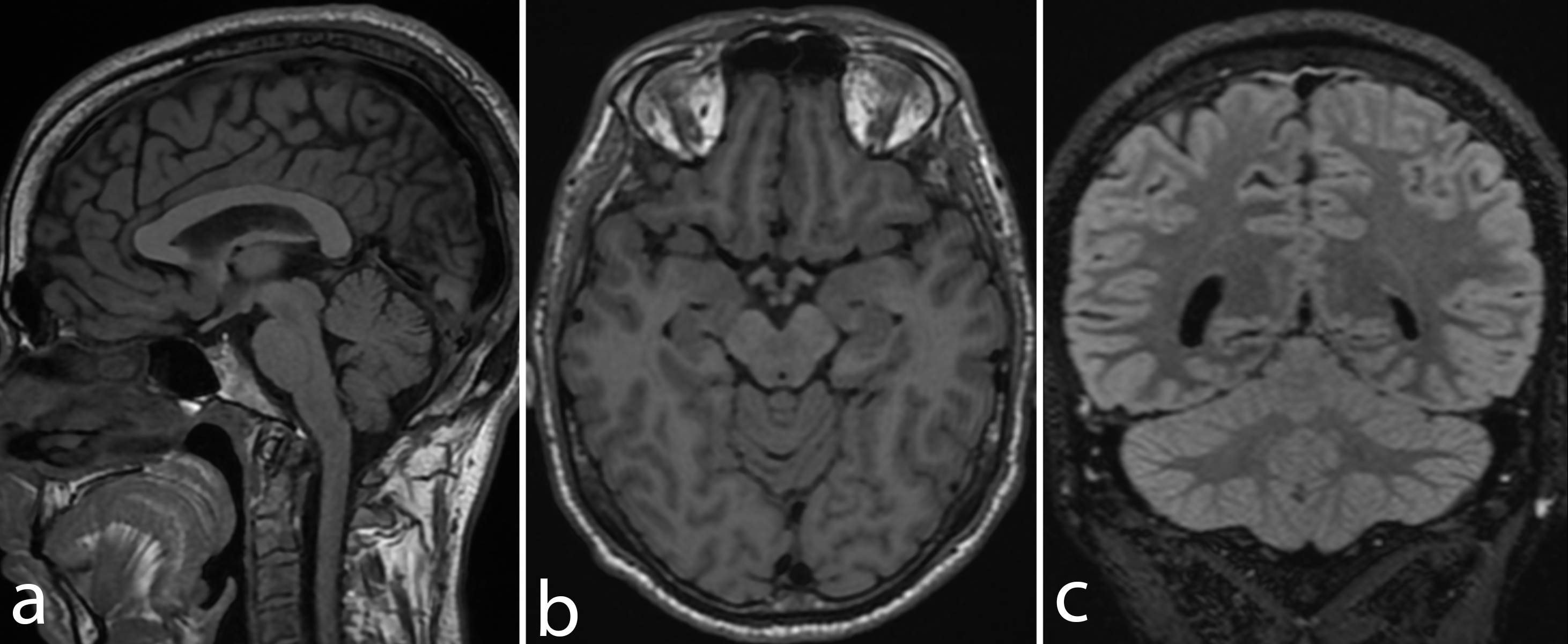Category: Ataxia
Objective: Hereditary Spastic Paraparesis (HSP) 42 is an autosomal dominant HSP caused by pathogenic mutations in the SLC33A1 gene. This subtype has been reported from a single Chinese family, and we report the first Indian patient with HSP 42.
Background: SCL33A1 gene encodes the acetyl-CoA transporter on the membrane of the endoplasmic reticulum which is responsible for acetyl-CoA import into its lumen, thereby affecting its acetylation status. The HSP/ataxia overlap, as seen in our patient, provides an opportunity to enhance our understanding of the impact of genetic variability in both of these network disorders.
Method: A 27-year-old male presented with progressively increasing tremulousness of both upper limbs and head (yes-yes type) for the past 15 years and 13 years, respectively. The hand tremors were predominantly on action and absent at rest. He had no history suggestive of lower limb, sensory or bladder bowel involvement. He was born to non-consanguineous parentage and with no family history of similar complaints. Examination revealed dysmetria, intention and postural tremors of his upper limbs, titubation and gaze-evoked nystagmus. He demonstrated saccadic slowing and broken pursuits in all directions of gaze. Generalized hyperreflexia was observed. He had grade 1 spasticity of his upper limbs with normal power.
Results: His routine investigations were normal. Spinocerebellar ataxia (SCA) panel, alfa-fetoprotein levels, GAA repeat testing for Friedreich’s ataxia were negative. His brain MRI revealed no abnormalities (Figure). Whole exome sequencing revealed the presence of pathogenic heterozygous missense mutation in SLC33A1 gene (c.1531T>C; p.Tyr511His) [CADD Phred score 28.2; Pathogenic on REVEL] confirming a diagnosis of HSP type 42.
Conclusion: The previously described family of HSP 42 cases by Lin et al. had patients with a pure HSP phenotype. In contrast, our patient presented with predominantly upper limb cerebellar complaints. This could be because of a different pathogenic SLC33A1 variant in our patient (c.1531T>C; p.Tyr511His) compared to Lin et al. (c.339T>G; p.Ser113Arg). The phenotypic and genotypic overlap between HSP and spinocerebellar ataxias (SCA) has been increasingly acknowledged, facilitated by the advent of next-generation sequencing (NGS). They share considerable genetic, phenotypic and pathophysiologic overlap.
Figure 1
References: 1. Lin P, Li J, Mao F, et al. A missense mutation in SLC33A1, which encodes the acetyl-CoA transporter, causes autosomal dominant spa transporter. Proc Natl Acad Sci USA 94:2897–2902.
2. Mao F, Li Z, Zhao B, et al. Identification and functional analysis of SLC33A1:c.339T>G (p.Ser113Arg) variant in the original SPG42 family. Human Mutat. 2015 Feb;36(2):240-9.
To cite this abstract in AMA style:
A. Agarwal, P. Sharma, D. Garg, A. Garg, M. Faruq, A. Srivastava. The first Indian patient with Hereditary Spastic Paraparesis type 42 due to a de novo SLC33A1 variant [abstract]. Mov Disord. 2024; 39 (suppl 1). https://www.mdsabstracts.org/abstract/the-first-indian-patient-with-hereditary-spastic-paraparesis-type-42-due-to-a-de-novo-slc33a1-variant/. Accessed April 1, 2025.« Back to 2024 International Congress
MDS Abstracts - https://www.mdsabstracts.org/abstract/the-first-indian-patient-with-hereditary-spastic-paraparesis-type-42-due-to-a-de-novo-slc33a1-variant/

